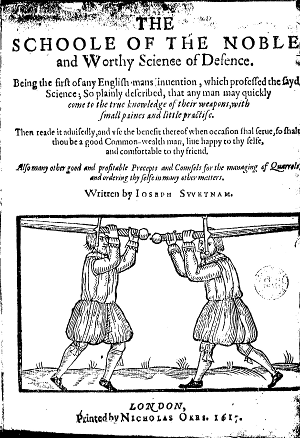A&S
Swetnam Chapter 5
This is part of an ongoing project to summarize and provide SCA focused commentary on The Schoole of the Noble and Worthy Science of Defence by Joseph Swetnam, published in 1617.
For links to the other sections of the Swetnam Project please go here.
I am using this facsimile: http://tysonwright.com/sword/SwetnamSchooleOfDefence.pdf for the project.
We now begin to get to the combat application part of Joseph Swetnam. Chapter five is a combination of how to fight a duel with a bit towards the end on avoiding duels.
Chap. V. The cause of quarrells, and what preparation you aught to be prepared with to answer a challenge.
Swetnam truly has it in for people who duel without cause. He does give leave to duel if your reputation is truly insulted, but for other than grave insults he admonishes us to turn the other cheek.


